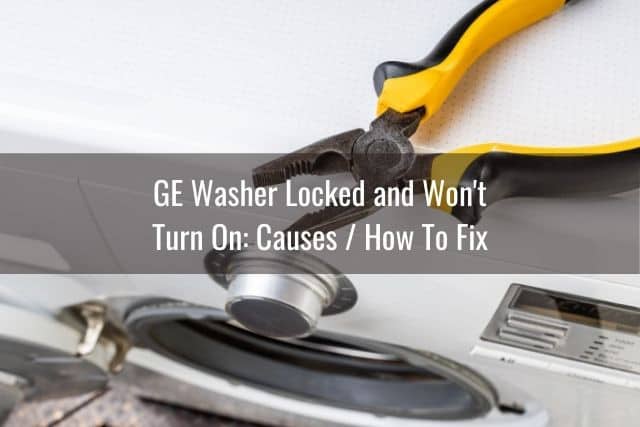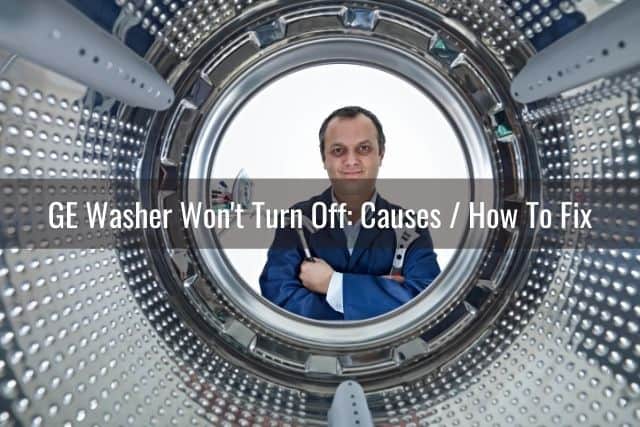Is your GE washing machine giving you trouble? Don’t worry, many common issues can be easily fixed with a little troubleshooting and some basic tools. In this comprehensive guide, we’ll walk you through the steps to diagnose and repair various problems you may encounter with your GE washing machine.

Image: readytodiy.com
Identifying the Malfunction
Before attempting any repairs, it’s important to identify the specific malfunction you’re experiencing. Observe the washing machine’s behavior during a wash cycle, paying attention to any unusual noises, leaks, or error messages. If the washing machine fails to start, complete a cycle, or drain properly, these symptoms can help narrow down the possible causes.
Common Problems and Solutions
1. Water Leaking from the Washing Machine
- Check the door seal: Inspect the rubber seal around the washing machine’s door for any tears or cracks that could allow water to escape. A damaged seal can be replaced relatively easily.
- Tighten loose hoses: Ensure the water supply hoses and drain hose are securely connected to the washing machine and water lines. Replace any hoses with damaged O-rings or cracked rubber.
2. Washing Machine Not Draining Properly
- Clean the pump filter: The pump filter, located at the bottom of the washing machine, can become clogged with lint and debris. Remove any blockages to clear the drain path.
- Check the drain hose: Inspect the drain hose for kinks or clogs. If the hose is obstructed, clear away any debris or reposition it for proper drainage.
3. Washing Machine Not Starting
- Check the power supply: Ensure the washing machine is plugged in and receiving power. If the power cord or outlet is faulty, seek professional assistance for replacement.
- Inspect the door switch: The door switch prevents the washing machine from operating when the door is open. Test the switch for continuity using a multimeter, and replace it if defective.
4. Agitator Not Working Properly
- Inspect the agitator coupler: The agitator coupler connects the agitator to the washing machine’s transmission. If the coupler is broken or worn, replace it with a new one.
- Check the transmission: If the agitator coupler is intact, the problem may lie within the transmission. This repair requires specialized knowledge and should be handled by a certified appliance repair technician.
5. Error Codes
- Refer to the washing machine’s user manual to determine the meaning of any error codes displayed on the control panel. The error code will indicate a specific issue that needs to be addressed.
6. Other Issues
- Noisy washing machine: Check for loose parts or unbalanced loads that could be causing excessive noise.
- Soap residue left on clothes: Adjust the detergent amount and verify that the correct type of detergent is being used.
- Clothes not cleaned thoroughly: Ensure the selected wash cycle is appropriate for the type of fabric and soiling.
When to Call a Professional
While these repairs can be attempted by handy homeowners, more complex issues may require professional assistance. If you encounter electrical problems, suspect a faulty control board, or attempt repairs without resolving the issue, it’s advisable to contact a certified appliance repair technician for further diagnosis and repair.

Image: readytodiy.com
How To Fix A Ge Washing Machine
Maintaining Your GE Washing Machine
Regular maintenance can prolong the lifespan of your GE washing machine and prevent costly repairs. Clean the detergent dispenser and lint trap regularly, and run a hot water cycle with a cleaning agent every month to remove soap buildup. Also, check the water supply hoses annually for any signs of wear or damage, and replace them as necessary.
By following these troubleshooting tips and performing regular maintenance, you can keep your GE washing machine running smoothly for years to come. If you encounter any difficulties or have further questions, refer to the user manual or consult a qualified appliance repair professional.